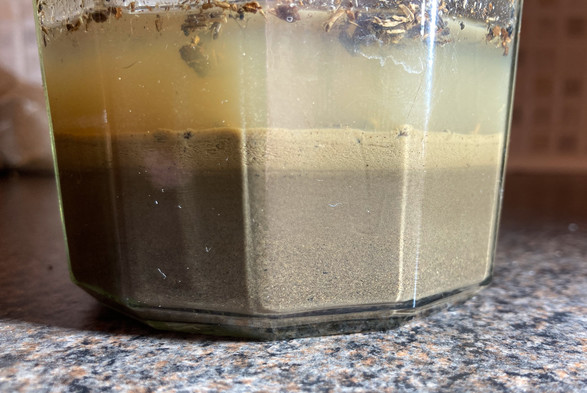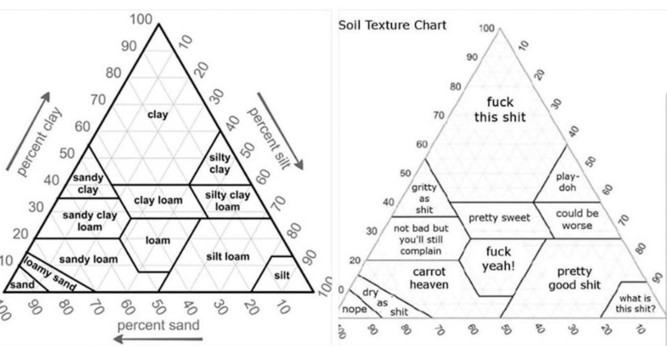Recent searches
Search options
I’ve done a couple of soil texture tests on the new plot. I was pre-warned about having clay soil and it’s not at all which shows it’s good to test (details in the alt text).
One bed is a silt loam and a sandy loam in another so I already know this is where next year’s carrots are going.
I’ll do one more test of the most recently cleared bed where the previous plot holder had their greenhouse. I’m expecting that to be a loam, it’s wonderfully friable.
#SoilHealth #Soil #Gardening #Allotment
@Broadfork I'm going to have to try this when things thaw out enough for me to take some samples. Can you point me to any soil texture resources?
@richrollgardener An internet search will give you your pick of a soil texture triangle. This graphic is reproduced courtesy of @KeithDJohnson
The link below has lots of information from Vidacycle, a UK based company, on soil assessments and doing practical tests we can all easily do.
https://www.soils.vidacycle.com/wp-content/uploads/2019/08/VESS_score_chart.pdf
@Broadfork @KeithDJohnson Thanks! I'll let you know how I make out.
@Broadfork @richrollgardener @KeithDJohnson. I see the carrots get their own soil classification but not the garlic.
@Broadfork Clay soil has lots of benefits that get overlooked. It holds moisture AND nutrients very well. The problems occur if the clay soil isn't well drained, or if it needs to be trafficable to machinery. Otherwise it's not too bad.
(We're in an area of deep clays underlying a very thin soil layer. The biggest problem we have is structural work: it's classified 'highly reactive' so has unbelievable shrink/swell amounts).
@colhill I agree. I’d personally much rather have a clay soil than a sandy soil for instance provided there’s no compaction layer that needs breaking up. All soil types are improved by adding organic matter.



